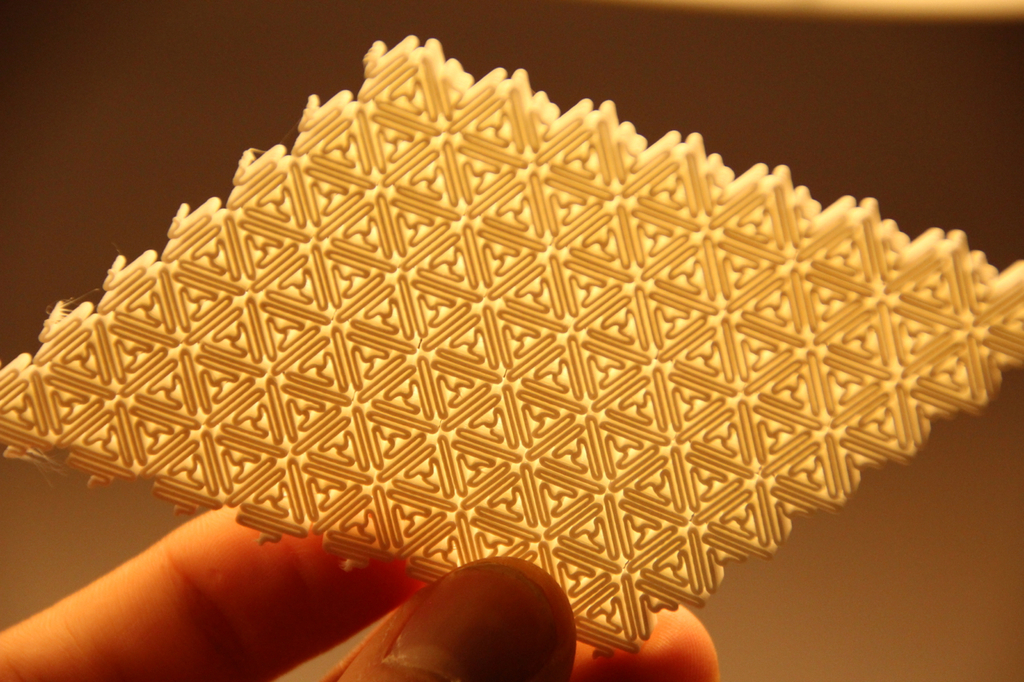Re: The Algorithm Thought Police
Earlier today Marius Watz posted some thoughts on “computational cliches” aka overused, well-known algorithms that make pretty things without much work. I largely agree with the sentiment and general attitude, but I’m not 100% in line with the take-away. Watz and I pretty much exists on the opposite ends of the computational art/design spectrum. I am a bit of an algorithm purist. I like to deeply understand algorithms, mess with the core ideas embedded in them, and see the pure output. While some might question the authorship of incremental algorithmic innovation, I’m skeptical of taking something simple and making it look sexy with lots of lines and colors.
My version of Watz’s complaint is that people are now able (through Grasshopper or Processing libraries) to use algorithms they don’t understand. When this happens, algorithms control you rather than being a building block in your own creative process. Part of the draw of computational design is you aren’t limited by the tools made available by others. Anything is possible. However, this comes with the caveat that in order for anything to be possible, you need to put in the effort to understand algorithms to the level that you can use them innovatively.
A lot of these algorithms which have become cliche are extremely deep and powerful ideas. In his post Watz says
Yes, heavy use of standard algorithms is bad for you. That is, it is if you wish to consider yourself a computational creative capable of coming up with interesting work. If you’re a computer scientist or an engineer standard algorithms are your bread and butter, and you should go right ahead and use them.
I would say a computational creative should approach standard algorithms in the same manner as computer scientists or engineers. For instance, Voronoi/Delaunay triangulation is probably the most powerful tool in computational geometry. It is at the heart of a ton of really important algorithms. To me, it’s massive potential in science and engineering indicates that there are also infinite creative ways to extend and use this tool. That doesn’t mean you should generate a bunch of random points, Voronoi that shit, and call it your design. It means you should study these geometric objects, understand their properties, and use that to accomplish things you wouldn’t otherwise be able to.



Michael
Well said.
Though no one really needs to worry about what anyone else is doing. It is obvious when people are not making unique work. Those who do understand their algorithms know the real satisfaction in their heart.
Guido Maciocci
i think the discussion is rather strange, especially when it is made so specific in relation to algorithms in computational design… isn’t it always the same story in architecture/design? there are standardized tools, processes and technologies which lead to standardized solutions when used in standard modalities. The ability to subvert the standards and use the tools in non-conventional ways leads to previously unexplored results allowing innovation to emerge. In modernism the development of new industrial processes (concrete, steel, glass, prefabrication,etc.) brought a whole new way of conceiving, organizing and constructing space for those who were able to adopt and exploit these new opportunities. At the same time it also gave birth to catalogue architecture—non-designed spaces that seem to have been picked straight out of a typological catalogue.
Now we have all these new possibilities at our fingertips and whilst some are able to exploit their true potential, most (as it is always the case) will simply rely on the out-of-the-box solutions on offer.
Same story, different day.
Forrest
Jesse,
I want to drive in the State of MA. Do I need to know how to design my own tie-rods before I’m licensed? Know how to replace them? Know what they are?
I know I like twelve cylinder, 5 liter engines. Isn’t that enough?
Too many SUV’s on the road.